01.2 Appearances
1/37
Earn XP
Description and Tags
01. Appearance & Anatomy
Name | Mastery | Learn | Test | Matching | Spaced |
|---|
No study sessions yet.
38 Terms
Saurischian Dinosaurs
Share an evolutionary ancestor w a pubis that extended downwards & forwards, towards ribcage
“lizard hipped“
Two Major Groups of Saurischian Dinos
1) Sauropodomorphs (sauropods)
2) Theropods
Sauropomorphs
Large herbivores w elongated necks & relatively small heads
(Saurischian → sauropod)
Prosauropods
(4)
Were an early group of sauropodomorphs → first group of large-bodied herbivorous dinos to evolve
Small heads & long necks
Some could walk on back feet
Had gripping claws
Sauropods
(5)
Were a later group of sauropodomorphs → many attained truly giant size
Long necks & tails
Stood on four legs
Vertebrae (particularly cervical) are filled w complex air sacks → help reduce weight
Simple peg-like teeth
Theropods
(6)
Were bipedal carnivorous dinos that share a carnivorous ancestor
Many were carnivores → serrated blade-like teeth & sharp hook claws
Some were herbivores
A few lacked teeth entirely
Birds → kind of theropod
Walked on hindlegs → bipedal
Originally had three clawed fingers
Ornithischian Dinosaurs
Share an evolutionary ancestor that had a pubis that extends downwards & backwards (towards tail) & a special beak-forming bone in the upper jaw (the predentary)
“bird hipped“
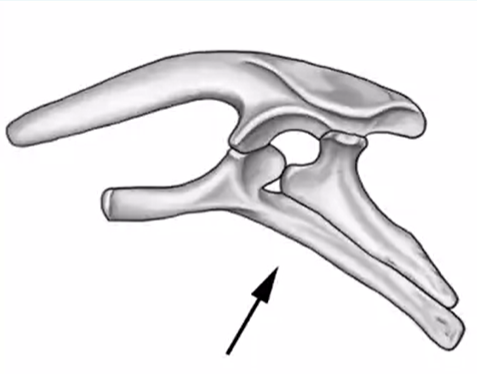
What were the adaptations in the ornithischians thought to be for?
(3)
Their adaptations were to aid in a herbivorous lifestyle
Backwards pubis → created more space in the ribcage probably filled w extra large digestive organs (to digest plant matter)
Beaks were also a herbivorous adaptation
Five Major Groups of Ornithischians
1) Ornithopods
2) Pachycephalosaurs
3) Ceratopsians
4) Stegosaurs
5) Ankylosaurs
Ornithopods
(4)
Wide range of dinos that lack armor & walk bipedally either all the time or assumed bipedal when running
Includes → iguanodonts & hadrosaurs
Iguanodonts
(2)
Large ornithopods → w spike-shaped claw on each hand
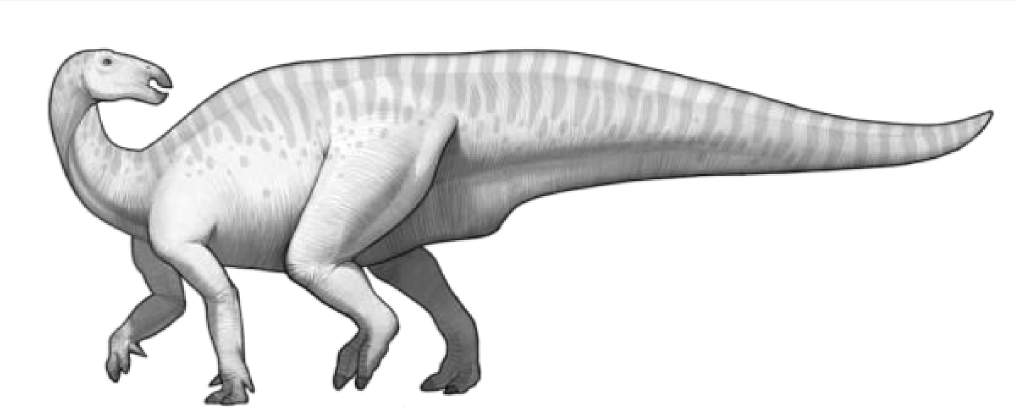
Hadrosaurs
(4)
Group of large ornithopods → the “duckbilled dinos“
Evolved late but were highly successful
Some had elaborate boney crests
Had dental batteries → large beaks in the front of their mouths & dense, tightly packed rows of small teeth in the rear
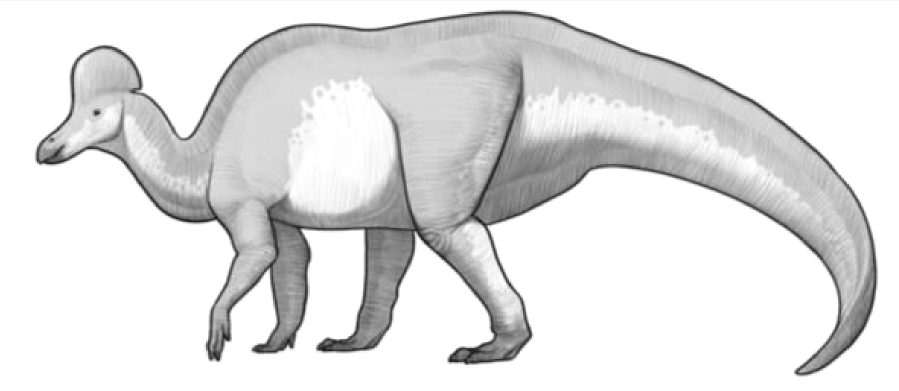
Pachycephalosaurs
(6)
Were bipedal, short arms, unusually stout & strong tails, & armored skulls
Some have thick, domed skull roofs & backwards pointing horns
Heads may have been used as battering rams
Have conical teeth in front of mouths behind beak & leaf-shaped teeth in the rear → suggested may have been omnivores
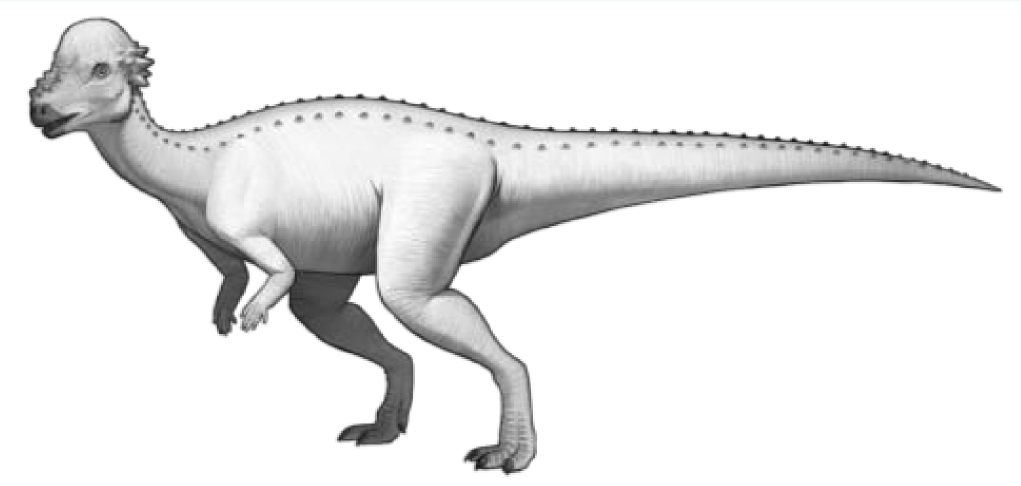
Ceratopsians
(5)
Had large parrot-like beaks & skulls that are greatly expanded in the rear
In most, rear skull expansion → large boney frill or a neck shield
Many have large horns & dental batteries
Most were quadrupedal w short tails
Evolved late in dino history
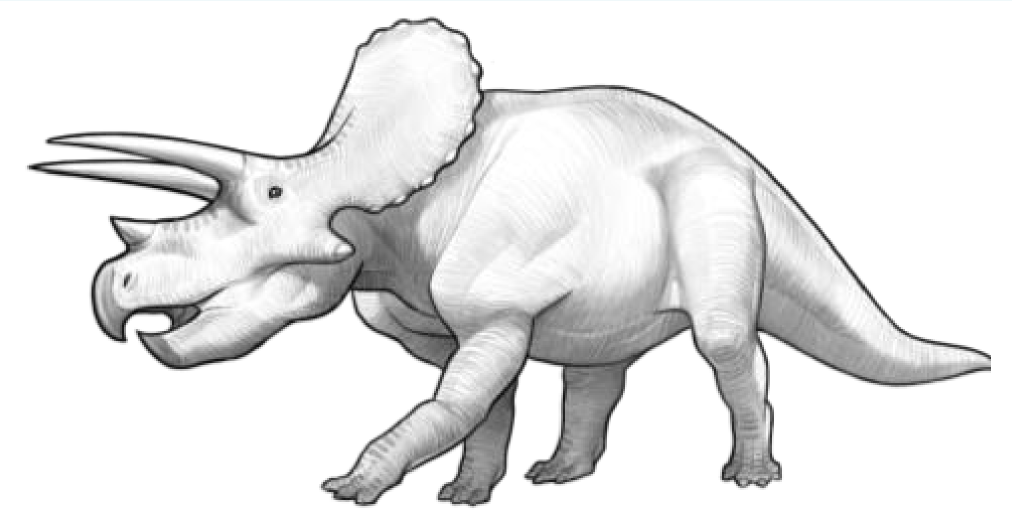
Stegosaurs
(4)
Were quadrupedal dinos w rows of projecting osteoderm plates down their backs & long individual osteoderm spines on their tails
Front limbs were much shorter than hindlimbs
Small heads relative to body
Narrow snouts
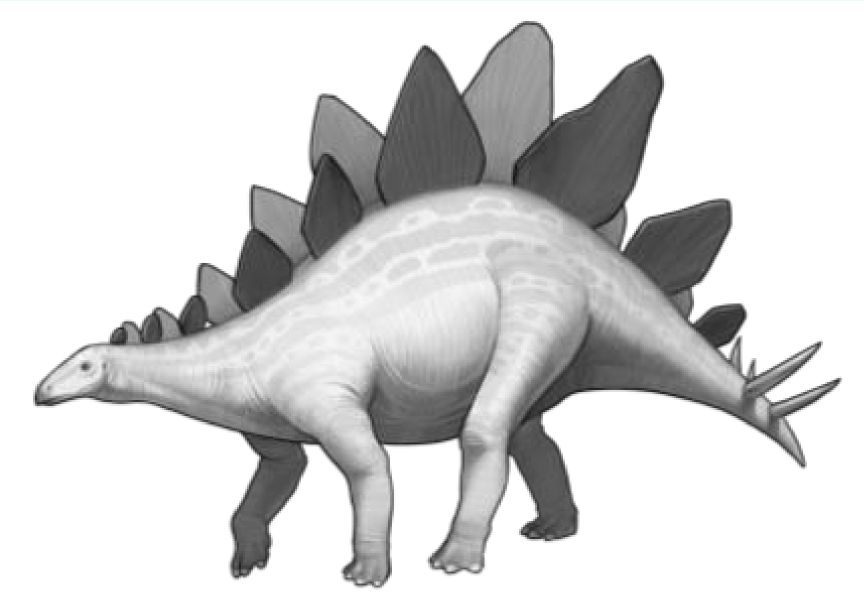
Ankylosaurs
(5)
Most heavily armored dinos → quadrupedal w short legs & wide ribcages
Backs & skulls covered w spikey protective osteoderms
Some have large osteoderms on the ends of their tails → forming a club
Most have short snouts & broader, rounded beaks
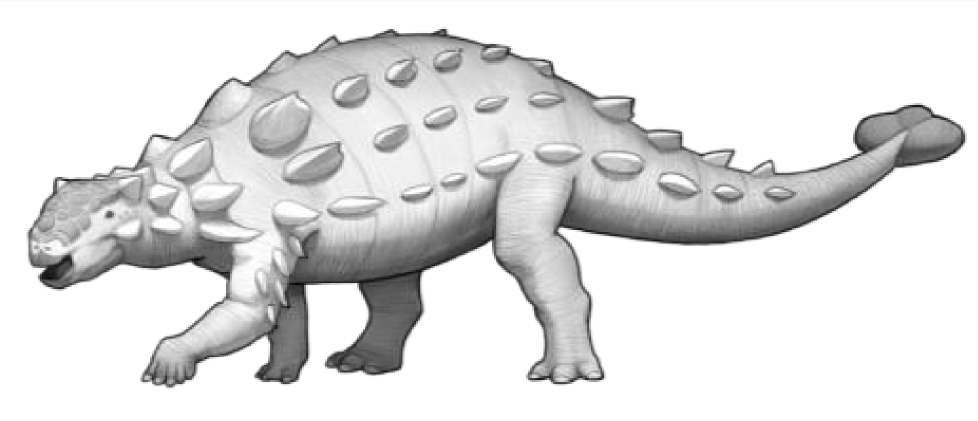
Integument
Body covering
Why is it difficult to know what a dino’s integument was like?
B/c soft tissues decay more rapidly than bone
Conditions under which soft tissues can be fossilized
(2)
Fossil footprints → foot molds make in soft, fine-grained sediments → may include impressions of foot scales
Skin impressions → if a dino was covered by mud shortly after it died (before flesh rotted away)
Dinos found w a lot of skin are often called —A—.
The first was a —B— in 1910, which showed that —C—.
A → “mummies“
B → hadrosaur
C→ they were covered in scales that differed in shape in diff regions of the body
Why does the scaly skin of dinos have a better change of being fossilized compared to humans?
B/c scales are covered in keratin → tough, flexible material
Also composes hair, feathers, fingernails, & the outside of claws, beaks, & horns
Sinosaurooteryx
(2)
Small theropod was found in 1996 w feathers → feathers preserved b/c body was suddenly buried by fine ash from a volcano
Now know that lots of small theropods had a cover of simple hair-like feathers
Yutyrannus
Found in 2012 → feathers found from this large tyrannosauroid
Largest known feathered dino
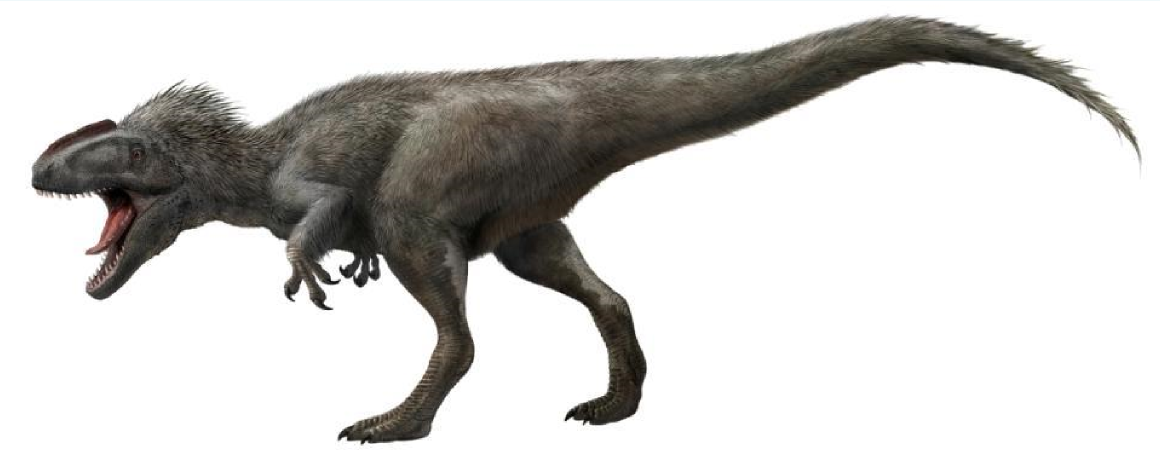
Theropod dinos are thought to have ___________ integument
Have feathers & filamentous integument
Few specimens suggest that some ornithischians might have _________ integument
Feather-like
Specimen of the early ceratopsian Psittacosaurus was found to have preserved _____________
Unusual long, stiff, bristle-like structures on its tail
Primitive ornithischian called Tianyulong was found to be cover in ____________
Long filament over most of its body
Osteoderms
(2)
Bones that develop within the skin & are common component of animal armor
Are considered integumentary structures
Four Possible Functions of Osteoderms
1) Storing calcium
2) Gathering heat from the sun
3) Protection from predators
4) To look good → attract mates or intimidate rivals
Melanosomes
Pigment cells within a feather
If observed in fossil feathers → clue to the dino’s colour based on studies of modern birds
What is feather colour influenced by?
(2)
The shape & arrangement of melanosomes
What three colours of feathers have not been found?
No feathers of green, red, or blue
What colour is associated w long & narrow melanosomes?
Black & grey
What colour is associated w short & wide melanosomes?
Brown & reddish
What colour is associated w no melanosomes?
White
What colour is associated w narrow melanosomes aligned in the same direction?
Iridescence/glossiness
Based on melanosome arrangements, what colours are the microraptor and anchiornis thought to be?
Microraptor → was glossy black
Anchiornis → was black & white w some reddish-brown on its head
How do we analyze muscles to understand how the dinos may have moved?
(3)
Shape of bones often corresponds to particular muscle shapes
Muscles often leave behind scars on the surface of bones where they attached
Pattern of muscle arrangement is very similar across tetrapods